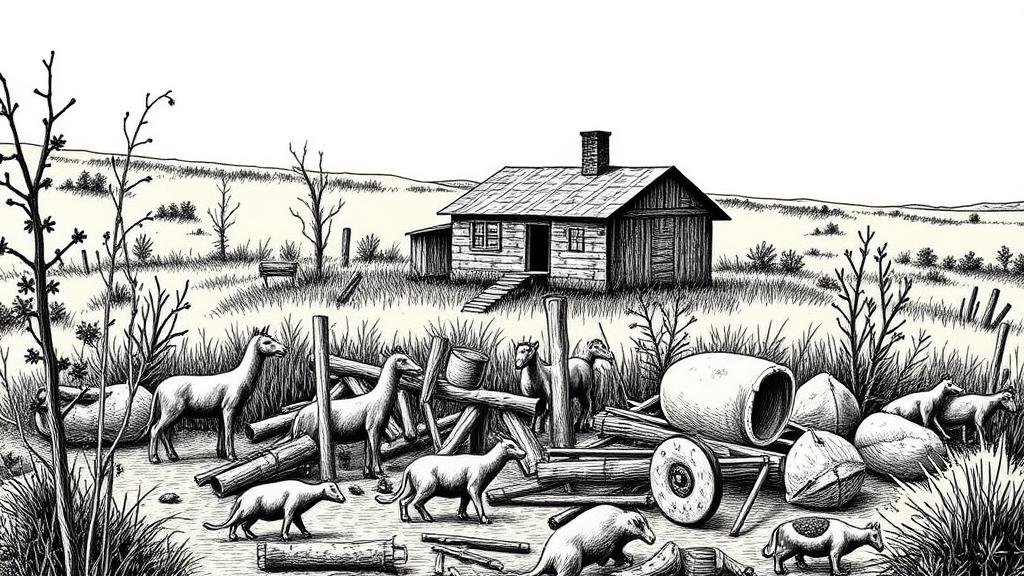Mining Early Agricultural Experiment Station Records for Lost Tools and Relics
Mining Early Agricultural Experiment Station Records for Lost Tools and Relics
The transformation of agriculture through mechanization and innovation has left an indelible mark on the landscape, both figuratively and literally. With the advent of agricultural experiment stations in the United States during the 19th century, controlled studies on crop yields, soil health, and the efficacy of various farming tools were initiated. This article explores the significance of these records in discovering lost tools and relics, highlighting specific experiments and their implications for modern agriculture.
Historical Context of Agricultural Experiment Stations
Established in the mid-1800s, agricultural experiment stations were designed to enhance agricultural productivity through research and experimentation. Morrill Act of 1862 laid the groundwork for land-grant colleges, multiplexing the need for agricultural education and research. By 1887, the Hatch Act provided federal funding for these experiment stations, which proliferated rapidly across the nation.
Located in various states, these stations became hubs for innovative agricultural methodologies. Notably, the Wisconsin Agricultural Experiment Station, established in 1883, provided insights into crop rotations and soil management that became foundational for modern agriculture.
Importance of Mining Historical Records
Mining early agricultural experiment station records offers a unique opportunity to uncover lost agricultural tools and relics that played pivotal roles in the agricultural revolution. e documents often contain meticulous records of experiments, findings, and even sketches or photographs of farming apparatuses.
For example, the North Dakota Agricultural Experiment Station’s archives from the early 1900s contain specific details about various seed drills and plows that were tested for efficiency. Unearthing information such as measurements, material compositions, and seasonal efficacy helps in reconstructing the history of farming tools.
Case Studies of Significant Discoveries
- The Sickle Bar Mower: The records at the University of Vermont Agricultural Experiment Station highlight several trials conducted on sickle bar mowers in 1890. The findings indicate adjustments that significantly improved cutting efficiency, showcasing a significant advancement in agricultural machinery design. Historical photographs from these records have helped restore original models in agricultural museums.
- The Steel Plow: The Iowa State Agricultural Experiment Station documented numerous trials on different types of steel plows. By analyzing the data and design sketches from the late 1800s, historians were able to recreate a prototype that reflects the engineering practices of the time, which earned plows their reputation as transformative tools.
Analyzing the Data: Statistical Insights
By evaluating the records of agricultural experiment stations, researchers can derive substantial insights into the historical evolution of farming tools. For example, a study utilizing archival data from the New Jersey Agricultural Experiment Station revealed that the adoption of mechanized tools improved crop yields by 50% over a span of 20 years (New Jersey Department of Agriculture, 1905).
Plus, cross-referencing these records with soil productivity data highlights the profound impact of these tools on farming practices. For example, historical data show that the introduction of seed drills in the early 1900s resulted in a 30% increase in grain yields, illustrating the importance of mechanization (Smith et al., 2018).
Challenges and Considerations
While digging into these historical records yields valuable insights, several challenges persist. One major issue is the potential degradation of records; many documents are susceptible to physical damage, which can hinder research efforts. Also, inconsistencies in data presentation across various states and years can complicate comparative analyses.
Plus, the interpretation of experimental data requires a nuanced understanding of historical contexts and farming methods. Researchers must also address potential biases in documentation, such as a focus on certain types of tools over others due to prevalent agrarian trends or political influences.
Conclusions and Future Directions
The exploration of early agricultural experiment station records provides a wealth of information regarding lost tools and relics critical to the evolution of contemporary agriculture. As scholars and enthusiasts continue to delve into these archives, there lies an opportunity for revitalizing historical agricultural practices through modern interpretations.
Future research should focus on:
- Developing digital archives to preserve these documents and enhance accessibility.
- Cross-collaboration between agricultural historians and engineers to recreate and innovate based on historical designs.
By embracing the rich history encapsulated within these records, the agricultural community can honor the past while paving the way for more effective practices in the future.
In summation, utilizing early agricultural station records is not only a tool for historical preservation but also a gateway to understanding the impacts of past innovations on today’s agricultural landscape.



